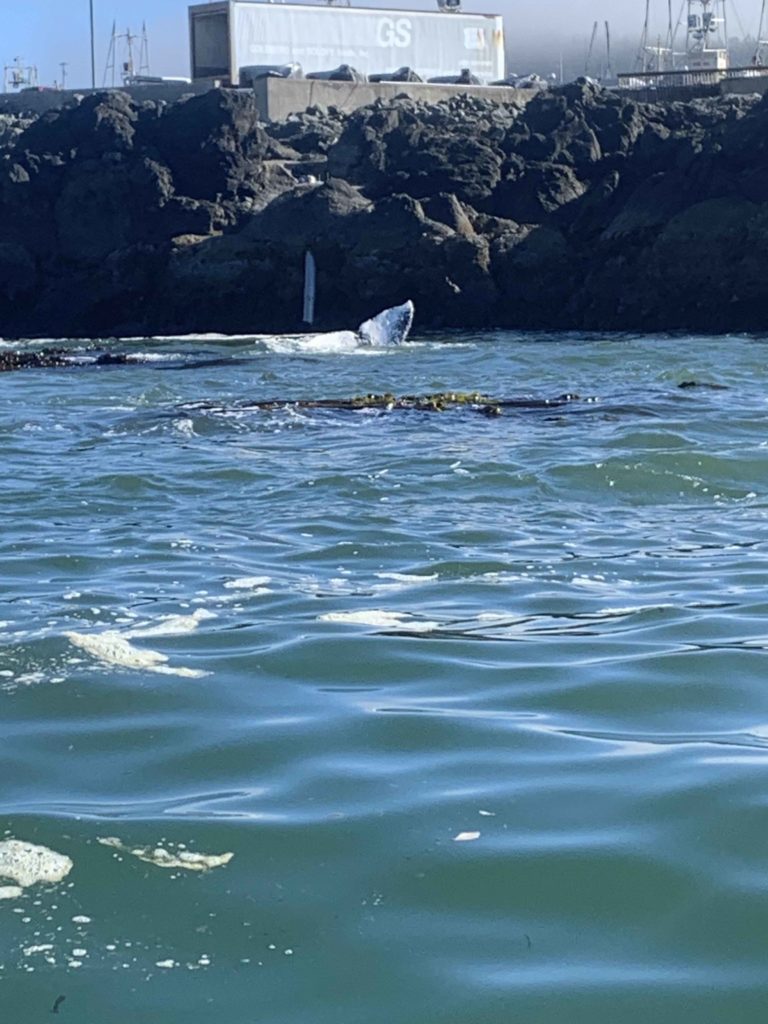By Elizabeth Kelly, Pacific High School senior, GEMM Lab summer intern

The gray whale foraging ecology project with OSU’s GEMM Lab has been nothing short of a dream come true. Going into this internship, I was just a high schooler who had taken zoology my previous school year. With my lack of a formal education in marine biology, let alone gray whales, I was a little daunted at the thought of going to a university field station with college students and actual biologists. When I applied for this internship, I didn’t think I was even going to be accepted for the internship, but I applied with high hopes and a lot of excitement. When I was officially accepted, I wanted to start immediately.
Despite my concerns of the steep learning curves I knew I would have to overcome, I was ready to jump right into the internship. The other interns live at the field station since they do not live locally, but I drive to the field station every morning because I live about 20 minutes away. However, this situation has never made me feel like an outsider. I spend a lot of my time at the field station and it would be hard to not get comfortable there immediately. I don’t feel sad that somebody is cooking some sort of delicious meal every night because even though I don’t live at the station, I sometimes stay for dinners. When I’m there for whatever reason, whether it be while working or eating and hanging out after a day of working or during breaks, I never feel out of my depth socially or even academically even though I am clearly younger and less experienced. The environment and team here, which is made up of scholarly individuals with lots of personality and character, is never judgemental or patronizing; rather it is inviting and the graduate student intern, Noah, and my team leader, Lisa, give off a feeling of mentorship. This has made my internship fun and given me far more of an interest and intent towards pursuing Wildlife Sciences after high school.

While there have been tedious parts of the internship with a steep learning curve, including asking many questions about whales, and learning to use different programs, tools and methods, it all pays off and comes in handy when the whole focus of the work comes through town – the famous gray whales. During this field season we have been having low whale sightings for the first 4 weeks (but our sightings are slowly picking up over the last couple days), so the waiting for the grand appearance of a whale can feel eternal. Though, when the red curtains reveal a blow out in the distance headed our way, the feeling of boredom when staring at the ocean is completely forgotten. Suddenly, everyone jumps to action – the theodolite’s position needs to be adjusted as we try to pinpoint where the whale will surface next after its dive.

Recently we have been collecting larger samples of zooplankton when sampling from our research kayak, and the whales have been coming in larger numbers too. Every time I see a whale while I am out on the kayak I am crippled with excitement and adrenaline. There is absolutely nothing like seeing these majestic mammals out and about in their day-to-day lives. I love when I get to see them forage, blow, shark, and even do headstands in the water. When we see them forage in a spot that is not one of our regular zooplankton sampling stations we do some adaptive sampling (sampling at spots where we see whales actively feeding), and so far the whales haven’t lied to me about where the zooplankton is. I’m very curious as to how the whales know where the higher concentrations of zooplankton are, even in low visibility (we have had plenty of that this year too). Nevertheless, they know and aren’t shy about getting what they want.
The only downfall of this internship is that it ends soon. I have thoroughly enjoyed my time with my team and at the field station. This in-the-field experience is one of a kind. Even though I didn’t think I was going to receive this internship, I really wanted it and now that I have had it and am finishing up with it, I am so grateful for the knowledge and experiences I have gained from it and look forward to the opportunities it will further grant me.

Congratulations, what a wonderful opportunity you have. I’m so proud of you. Good Luck.